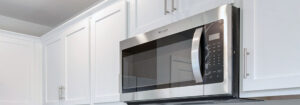Have you got an electrical system which keeps tripping? It’s a massive pain to deal with, and it can lead to serious complications when you just want to cook dinner for your loved ones. Now, you might have an oven which is causing the problem, and you might not know why.
There’s actually a couple of reasons why your oven might be struggling to work without busting up the electrics in your home, and if you’re going to get to the root cause of the problem, you need to understand the causes. Let’s check out some of the top reasons why your oven is tripping your electrics whenever you use it.
Circuit Problems
The first reason for why your oven might trip the electrics is a problem with the circuits. A technician would check for an overload of the circuits. They’ll start this process by checking to see if there’s more than one appliance connected to the same circuit that your oven is on.
If this happens, what you’re going to want to do is to unplug any other appliances connected to the circuit and then switch the oven on. This should correct the tripping issues. It might be the case that you need to upgrade the over circuit, increasing capacity or adding the appliances to another circuit.
Alternatively, if there’s no other appliance hooked up to the circuit with your oven, they’ll use a clamp-on ammeter to measure the power levels on the circuit when your oven is turned on. If the load on the circuit is too much, then your best bet is to upgrade.
Alternatively, you might find that the electricity is tripping if the circuit breaker is faulty or there’s a wiring problem. If this happens, you should ask a qualified electrician to check for damage to the insulation.
Plug Issues
The technician will be able to measure the current produced by your oven when it is off. Normally, this will be 0 – there is no current when it is turned off. However, if your current is greater than 0.3A, you might have a damaged oven wire on your hands. Common indicators of this include damaged wiring or soot.
If you’ve recently bought a new oven, then it might be a problem with the connections. There are manufacturers who create ovens that have terminal blocks – these blocks give compatibility with terminals across Europe. The links need to be lined up in the right way, so if you’re not sure, check the instruction manuals.
For those products which are a bit older, you’ll need to be sure that your terminal block is in good condition. What you will find is that terminal blocks deteriorate over time, so you need to replace it when it happens.
Oven Components
Sometimes, your issue might be with the electric oven. If this happens, you’ll need to make sure that you check to see if there are other appliances that are connected to the same circuit. You can test this by turning on the oven at a lower temperature. When the electricity does not immediately trip, that means that there is no short in the fuse.
The next part of the process is to raise the temperature of the oven, slowly. If the electrics trip then, you’ll find that it is a problem with a heating element.
There are other issues which could cause your electrics to trip, however. These include things like a faulty selector switch, internal lamp, thermostat or fans. It’s important to go through a logical process of elimination to find out what is wrong with your system and how you can fix it. It’s achievable by selecting certain areas of the oven to test and seeing if that trips the system.
There are a lot of tools that you can use to measure whether the component in an oven is working correctly. These tests are only for a cursory understanding however, and if you’re going to deal with an issue effectively, it’s recommended you consult with a professional.
Final Thoughts
Your oven can trip a circuit breaker for many reasons. Knowing how to deal with this and identify the problem will help a lot. When in doubt, consult with a professional. You’ll find that what you’re dealing with will be outside your area of expertise and a pro will help in a big way.








